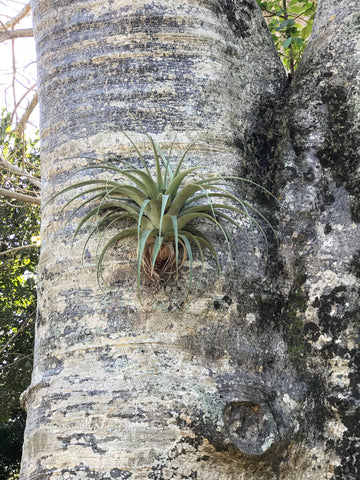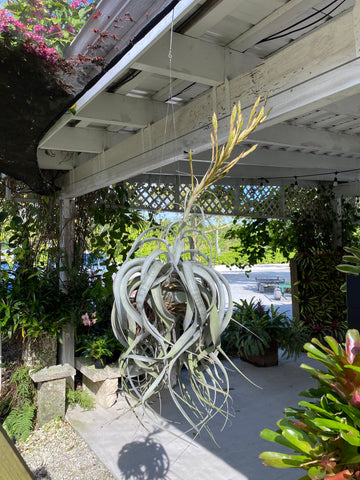Tillandsias

Tillandsias are not like your average houseplant. Widely known as air plants, they don't require soil - only water and light. In nature, air plants are epiphytes. This means they grow by using their roots to cling to barks, rocks, and other natural hosts. They're mess-free and stress-free, requiring minimal care.

The best thing about air plants is that you can keep them literally anywhere. As long as they're getting lots of bright light and consistent moisture, they'll be happy. You can place them on a shelf or sill, hang them, or even wear them as an accessory (JK... maybe).
Hailing from the tropical Americas, Tillandsias are a part of the Bromeliad family and absorb water and nutrients through their leaves. To water them at home, simply soak them for about 15 minutes once a week. After bath time, gently shake them out and allow them to dry upside down. This is the best way to avoid rot since water is easily trapped in the crevices. When it's in its flowering phase, avoid wetting the blooms. Never attempt to plant your Tillandsia in soil - it'll hate that and quickly rot.

Much like their Bromeliad cousins, Tillandsias will only bloom once in their lifetime. After producing their showy flowers the plant slowly begins to die, but not before they leave some pups behind to carry on their legacy. The pups (baby air plants) will form towards the base and can be gently plucked off to live on their own when they are at least a 1/3 the size of the mother plant.
There at least 500 species of air plants out there, each with their own unique, alien-like features.
